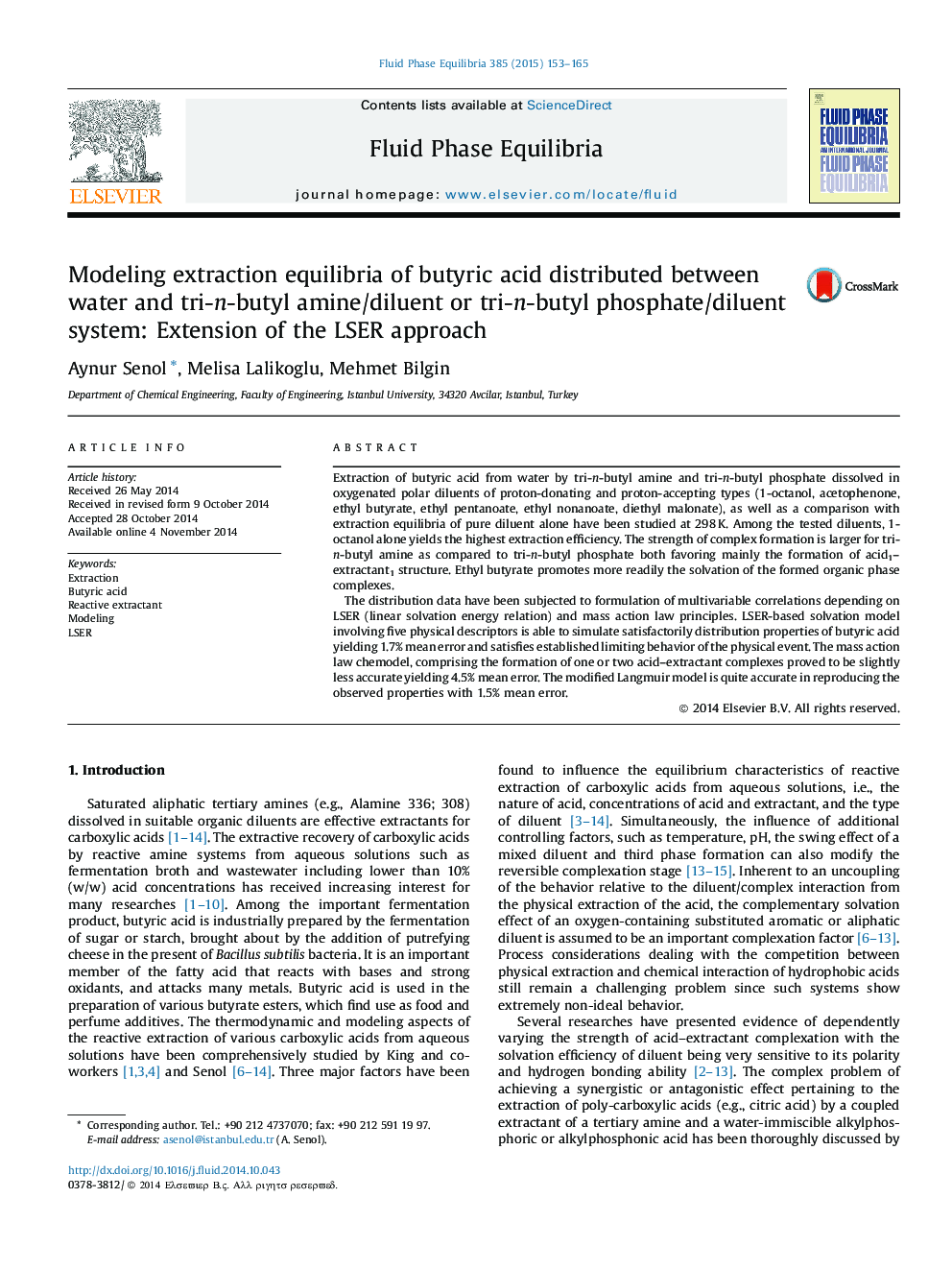| کد مقاله | کد نشریه | سال انتشار | مقاله انگلیسی | نسخه تمام متن |
|---|---|---|---|---|
| 201784 | 460570 | 2015 | 13 صفحه PDF | دانلود رایگان |

• Extraction of butyric acid by TBA/diluent and TBP/diluent was studied at 298.2 K.
• Extraction efficiencies of TBA and TBP were compared for six polar diluents.
• Chemodel reproduces distribution properties of butyric acid with 3% mean error.
• LSER model simulates satisfactorily the observed performance with 1.7% mean error.
Extraction of butyric acid from water by tri-n-butyl amine and tri-n-butyl phosphate dissolved in oxygenated polar diluents of proton-donating and proton-accepting types (1-octanol, acetophenone, ethyl butyrate, ethyl pentanoate, ethyl nonanoate, diethyl malonate), as well as a comparison with extraction equilibria of pure diluent alone have been studied at 298 K. Among the tested diluents, 1-octanol alone yields the highest extraction efficiency. The strength of complex formation is larger for tri-n-butyl amine as compared to tri-n-butyl phosphate both favoring mainly the formation of acid1–extractant1 structure. Ethyl butyrate promotes more readily the solvation of the formed organic phase complexes.The distribution data have been subjected to formulation of multivariable correlations depending on LSER (linear solvation energy relation) and mass action law principles. LSER-based solvation model involving five physical descriptors is able to simulate satisfactorily distribution properties of butyric acid yielding 1.7% mean error and satisfies established limiting behavior of the physical event. The mass action law chemodel, comprising the formation of one or two acid–extractant complexes proved to be slightly less accurate yielding 4.5% mean error. The modified Langmuir model is quite accurate in reproducing the observed properties with 1.5% mean error.
Journal: Fluid Phase Equilibria - Volume 385, 15 January 2015, Pages 153–165